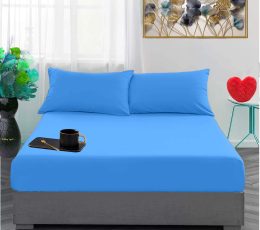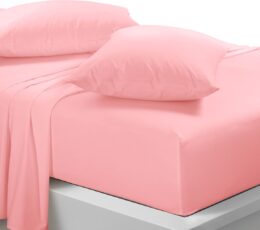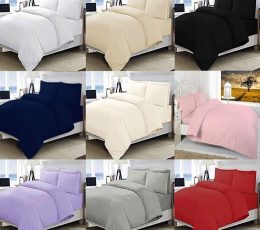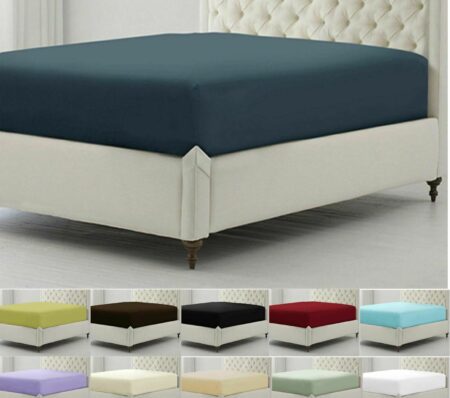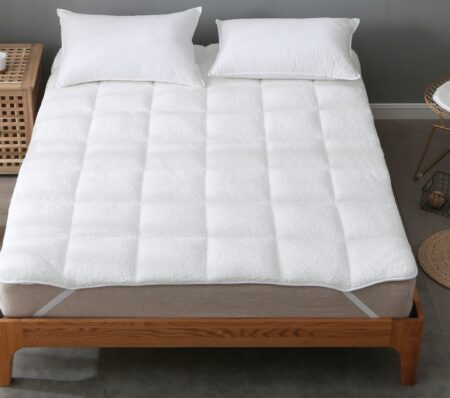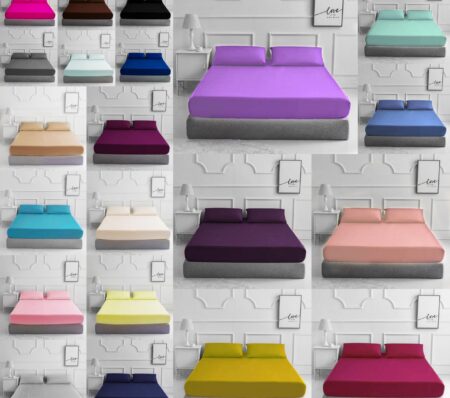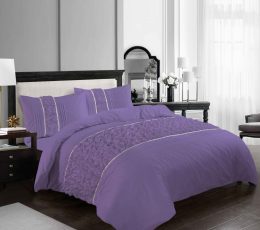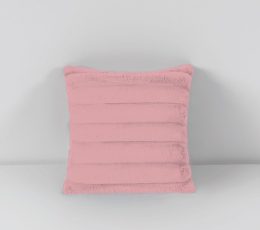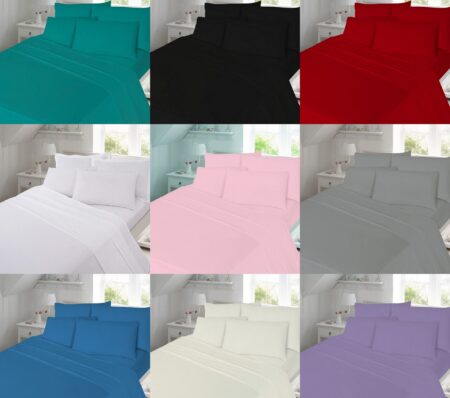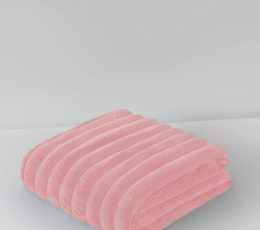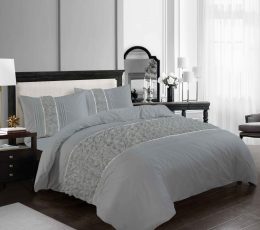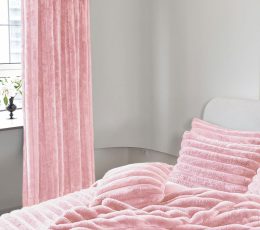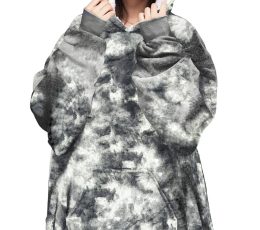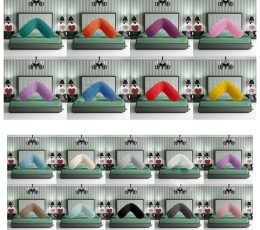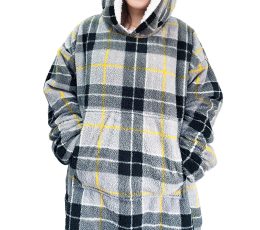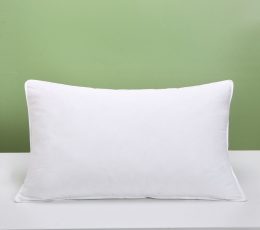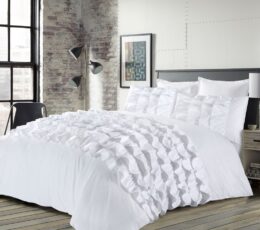Selecting the Best pillows goes beyond simply picking one off the shelf. It involves understanding your unique sleeping habits, preferences, and any specific needs you may have. However, with so many options available on the market, finding the best pillow that matches the level of hotel collection pillows is tough. Here’s a comprehensive guide on choosing the best pillow based on factors such as sleeping position, body temperature, and any existing neck or back pain. Before that, we recommend to understand the pillow guide for pillows fundamentals.

How to Select the Best Pillows
Selecting the best comfort pillow goes beyond simply picking one off the shelf. It involves understanding your unique sleeping habits, preferences, and any specific needs you may have. Here’s a comprehensive guide on choosing the best thickness of pillow based on factors such as sleeping position, body temperature, and any existing neck or back pain.
Find Your Sleeping Position
Your preferred sleeping position significantly influences the pillow type that will provide optimal comfort and support. Every Sleep position requires their own level of comfort and the angle from their pillow that makes then comfortable for their night sleep. So, Lets derive some of the pillow which are suitable for the most popular sleeping position.
- Back Sleepers: If you sleep on your back, you’ll want a pillow that supports the natural curve of your neck and maintains proper spinal alignment. Look for a medium-firm pillow that isn’t too thick, which can prevent your head from being pushed too far forward. Memory foam or latex pillows are excellent for back sleepers as they contour to the shape of your head and neck, providing support where needed. The opposite goes for selecting the best pillow for front sleepers.
- Side Sleepers: Side sleeper pillow with more loft to keep the head and neck aligned with the spine. A firm or extra-firm pillow is ideal for side sleepers as it prevents the head from sinking too deeply into the pillow, which can cause neck strain. Consider a pillow with a gusseted design or one specifically designed for side sleepers to ensure adequate support and comfort throughout the night.
- Stomach Sleepers: Sleeping on your stomach can strain the neck and spine, so it’s best to opt for a thin, soft pillow or even forego using one altogether. If you prefer a pillow, choose one with minimal loft to prevent your head from being raised too high, which can cause discomfort and strain on your neck. For more sleeping position the guide of discovering the best sleeping position is a good choice.
Moving Around at Night Isn’t Always a Bad Thing
If you shift positions frequently at night, you’ll need a versatile pillow to accommodate various sleeping positions. Consider a pillow with an adjustable loft, such as one filled with shredded memory foam, which allows you to customize the thickness to your preference. Alternatively, a contoured pillow with different support zones can provide comfort and support no matter how much you move around. This type of pillows can also be considered as the best camping pillow.
Sleeping Body Temperature
Your body temperature plays a significant role in determining your sleep quality. Choosing a pillow that helps regulate heat and moisture can enhance your comfort. Make sure before getting a new pillow you have to know how much to pay for a decent pillows that can get the quality pillow with in the affordable rate.
- Cooling Pillows: If you often wake up feeling hot and sweaty, consider investing in a cooling gel pillow made from breathable materials like bamboo pillow or gel-infused memory foam. These pillows wick away moisture and dissipate heat, keeping you cool and comfortable throughout the night.
- Breathable Fabrics: Look for pillows with covers made from natural fibres like cotton or linen, which promote airflow and ventilation. Additionally, pillows with perforated or ventilated designs allow for better air circulation, preventing heat buildup and ensuring a more restful sleep experience.
pillow for Neck & back pain:
If you suffer from neck or back pain, choosing the right pillow is essential for alleviating discomfort and promoting proper spinal alignment.
- Contoured Pillows: Contoured pillows with ergonomic designs are specifically crafted to support the natural curvature of your spine and neck, relieving pressure points and reducing pain. These pillows typically have a higher contour for the neck and a lower contour for the head, ensuring optimal support and alignment throughout the night.
- Orthopaedic Pillows: Orthopedic pillows are engineered with firmer materials and strategic support zones to provide targeted relief for neck and back pain. Memory foam, latex, or water-based pillows conform to the contours of your body, offering customized support and promoting healthy spinal alignment for a pain-free sleep experience.

Best Pillow Fillings
Several options are available regarding pillow fillings, each with unique characteristics and benefits. For more details you cna check our guide for choosing the right cushion filling. Here are some of the best pillow fillings to consider:
- Memory Foam: Memory foam pillows contour to the shape of your head and neck, providing personalized support and alignment. They are excellent for relieving pressure points and reducing neck and shoulder pain. This type of filling is famously used for nursing pillow.
- Latex: Latex pillows are durable and resilient, offering a supportive yet buoyant feel. They are hypoallergenic and resistant to dust mites and mould, making them ideal for allergy sufferers.
- Down and Feather: Duck feather pillows are soft, lightweight, and breathable. They provide excellent insulation and can be fluffed up or flattened to adjust the loft according to your preference.
- Microfiber: Microfiber pillows are soft, plush, and hypoallergenic. They offer a down-like feel without the risk of allergies and are often more affordable than natural fillings.
- Buckwheat Hulls: Buckwheat hull pillows are firm and supportive, conforming to the shape of your head and neck while providing excellent airflow. They are ideal for those who prefer a more substantial pillow with natural materials.
- Polyester: Polyester pillows are budget-friendly and come in various firmness levels. They are machine washable and retain shape well over time, making them a practical choice for everyday use.
Choosing the right pillow filling depends on your personal preferences, sleeping habits, and any specific needs you may have, such as allergies or neck pain. Experimenting with different fillings can help you find the perfect pillow for a restful night’s sleep. Avoid using the cheap pillows as you don’t assume how long does cheap pillow last.
How Many Pillows Should You Use?
The number of pillows you use depends on your sleeping preferences and several other factors like weather you are using thick pillow or thin pillow while sleeping. Here are some considerations to keep in mind:
- Head Support: Most people prefer one pillow to support their head and neck while sleeping. However, some individuals may find additional pillows beneficial for extra support or elevation, particularly if they suffer from acid reflux or snoring.
- Body Support: Using extra pillows to support various body parts, such as the knees, back, or between the legs, can help alleviate pressure points and promote better spinal alignment. Pregnancy, body, or wedge pillows are popular choices for providing additional support and comfort.
- Decorative Pillows: Decorative pillows are primarily used for aesthetic purposes rather than functional support. They can add colour, texture, and style to your bedding ensemble but are typically removed before sleeping.
Ultimately, the number of pillows you use is a matter of personal preference and comfort. Experimenting with configurations and pillow arrangements can help you find the optimal setup for a good night’s sleep.

Pillow Maintenance:
Proper pillow maintenance is essential for preserving its shape, cleanliness, and longevity. Here are some tips for maintaining your pillows:
- Regular Fluffing: Fluffing your pillows daily helps redistribute the filling and maintain their shape and loft. This is especially important for down and feather pillows, which can become flattened over time.
- Washing Instructions: Follow the manufacturer’s instructions to clean your pillows regularly. Most pillows can be machine-washed and dried, but a gentle cycle and mild detergent are essential to avoid damaging the filling.
- Pillow Protectors: Using pillow protectors or pillowcases can help prevent stains, dirt, and sweat from penetrating the pillow. Wash the pillow protectors and bedding regularly to keep them clean and fresh.
- Replacing Pillows: Over time, pillows can become worn out and lose their shape and support. Replace your pillows every 1-2 years or sooner if they show signs of wear and tear, such as lumps, flattened areas, or an unpleasant odour.
FAQs
What is the best pillow filling for neck pain?
Memory foam and latex are often recommended for neck pain as they provide excellent support and contouring to alleviate pressure points.
Are down pillows suitable for people with allergies?
Down pillows may trigger allergies in some individuals due to the presence of feathers. Consider hypoallergenic alternatives such as memory foam or microfiber pillows.
How is a pillow the right loft for my sleeping position?
Back sleepers typically need medium loft, side sleepers require high loft, and stomach sleepers benefit from low loft pillows. Experiment with different heights to find the most comfortable option for your needs.
Can I wash my pillow in the washing machine?
Most pillows can be washed in the washing machine, but it’s essential to check the care instructions provided by the manufacturer. Use a gentle cycle and mild detergent to preserve the pillow’s integrity.
What is the difference between memory foam and shredded memory foam pillows?
Memory foam pillows are made from a single piece of foam, providing consistent support, while shredded memory foam pillows contain small pieces of foam that can be adjusted to customize the loft and firmness.
How often should I replace my pillow?
Pillows should be replaced every 1-2 years or sooner if they show signs of wear and tear, such as lumps, flattened areas, or an unpleasant odour.
Are cooling pillows effective in reducing night sweats?
Cooling pillows made from breathable materials like bamboo or gel-infused memory foam can help wick away moisture and dissipate heat, relieving night sweats.
What is the best pillow for combination sleepers?
Combination sleepers benefit from pillows with adjustable lofts, such as shredded memory foam or contoured pillows, which can accommodate different sleeping positions throughout the night.
Can I use a pillow protector with my pillow?
Yes, using a pillow protector can help extend the life of your pillow by preventing stains, dirt, and sweat from penetrating the fabric. Wash the pillow protector regularly along with your bedding for optimal hygiene.
Are orthopaedic pillows suitable for everyone?
While orthopaedic pillows are designed to provide targeted support for neck and back pain, they may not suit everyone. Try different pillow options and find the one that best suits your needs and preferences.
Selecting the best pillows for your needs involves considering factors such as your sleeping position, body temperature, and neck or back pain. Choosing a pillow that provides adequate support and comfort can improve your sleep quality and help you wake up refreshed and rejuvenated. Whether you prefer a soft, plush pillow or a firm, supportive one, plenty of options are available to suit your preferences and ensure a restful night’s sleep. The hotels consider every this fraction of the information for choosing the best hotel pillow.



